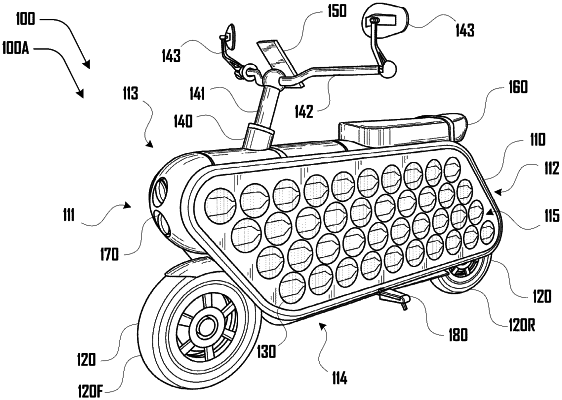| CPC B62J 45/00 (2020.02) [B62J 43/16 (2020.02); B62K 11/04 (2013.01); B62K 21/12 (2013.01); B62K 2204/00 (2013.01)] | 18 Claims |

|
1. A solar-powered vehicle comprising:
a body having a front end, rear end, top and opposing sides, the body further defining a cavity;
two or more wheels;
a first and second solar panel assembly respectively disposed on the opposing sides of the body;
one or more electric motor disposed within the cavity of the body between the first and second solar panel assemblies, the one or more electric motors configured to rotate at least one of the two or more wheels;
one or more electric battery disposed within the cavity of the body between the first and second solar panel assemblies, the one or more electric batteries configured to power the one or more electric motors and to be charged by electric current generated by the first and second solar panel assemblies; and
reflective elements on the opposing sides of the vehicle having a reflective material that reflects sunlight onto the first and second solar panel assemblies on opposing sides of the body with a reflection factor of greater than 50%, the reflective elements defining respective reflective surfaces that have a surface area greater than 10% of a surface area of the respective first and second solar panel assemblies.
|